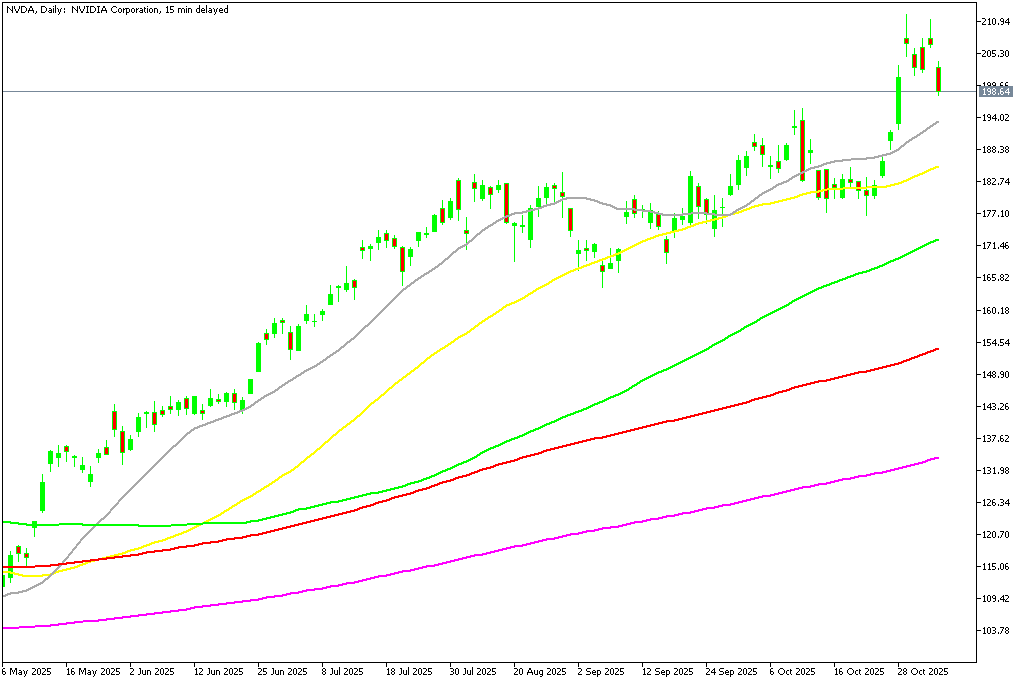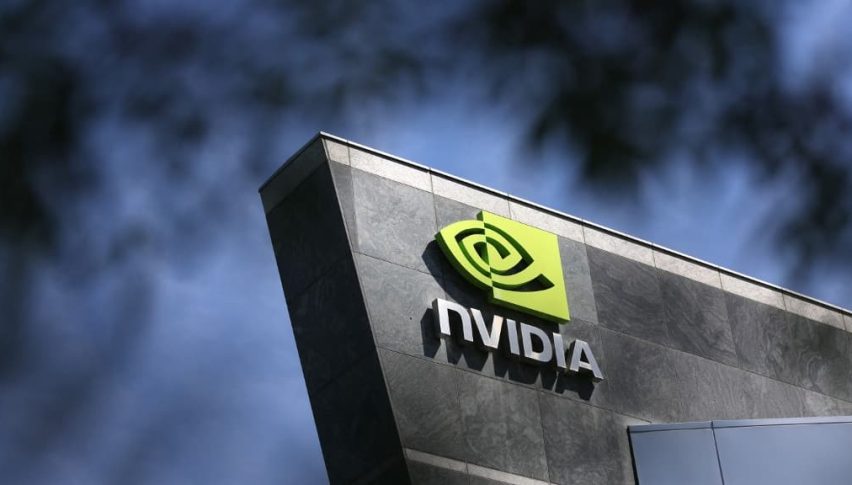NVDA Stock Slips Below $200 Unable to Sell Chips to China, Nvidia Market Cap Under $5T
NVIDIA’s latest record-breaking results failed to lift investor sentiment as renewed U.S.–China policy tensions and trade restrictions trigg

Quick overview
- NVIDIA's record profits failed to boost investor sentiment, leading to a significant selloff and a drop in market cap from over $5 trillion to $4.8 trillion.
- Concerns over potential U.S. export restrictions to China have heightened market volatility, despite NVIDIA's strong operational performance.
- The semiconductor sector is experiencing a downturn as investors anticipate tighter global trade conditions and a slowdown in AI hardware demand.
- NVIDIA's fundamentals remain strong, with a projected revenue of around $54 billion for the upcoming quarter, but geopolitical risks are overshadowing its growth potential.
Live NVDA Chart
[[NVDA-graph]]NVIDIA’s latest record-breaking results failed to lift investor sentiment as renewed U.S.–China policy tensions and trade restrictions triggered a sharp selloff, erasing billions in market value.
Market Pressure Mounts Despite Record Profits
After a meteoric climb above the $5 trillion mark last week, NVIDIA’s market cap slid back to $4.8 trillion as shares tumbled nearly 4% on Monday, breaking below the $200 threshold. The decline came despite another quarter of record-breaking profit, highlighting how investor focus has shifted from earnings strength to policy uncertainty.
Technical Landscape: Support Levels in Focus
The selloff reflects mounting unease over potential U.S. export restrictions that could impact NVIDIA’s key Chinese market. Although the company remains fundamentally strong, traders appear increasingly wary of the political crossfire surrounding its AI dominance.
Policy Uncertainty Weighs on Confidence
NVIDIA’s leadership attempted to calm investors after reports surfaced that Washington might block exports of the company’s advanced Blackwell AI chips to China. The White House confirmed that the U.S. currently has no plans to approve such sales, adding to fears of lost revenue from one of NVIDIA’s largest overseas markets.
Chief Financial Officer Colette Kress later clarified that the proposed 15% tariff on AI chip exports has not yet been implemented, meaning shipments can continue under existing terms. Yet the ambiguity has created a cloud of uncertainty, keeping markets volatile and investor sentiment fragile.
Semiconductor Sector Caught in the Downturn
The pressure isn’t confined to NVIDIA. Broader semiconductor stocks have also turned lower as investors brace for tighter global trade conditions and a potential cooldown in AI hardware demand. Even major names like Palantir joined the selloff, with bearish sentiment fueled by well-known short-seller Michael Burry’s recent positioning against tech heavyweights.
Fundamentals Remain Strong — For Now
Despite the market jitters, NVIDIA’s operational performance remains robust. Second-quarter revenue surged 56% year-over-year, driven by relentless AI and data center demand, while margins held steady even amid higher costs. For the upcoming quarter, management projects around $54 billion in revenue with gross margins in the mid-70% range — guidance that underscores the company’s continued dominance in AI chips.
Conclusion: NVIDIA’s latest stumble underscores how even the strongest fundamentals can be overshadowed by geopolitical risk. While its growth story remains intact, policy uncertainty, tariffs, and trade restrictions now pose the biggest threat to the company’s momentum — and to investor confidence in the world’s most valuable semiconductor maker.
- Check out our free forex signals
- Follow the top economic events on FX Leaders economic calendar
- Trade better, discover more Forex Trading Strategies
- Open a FREE Trading Account




